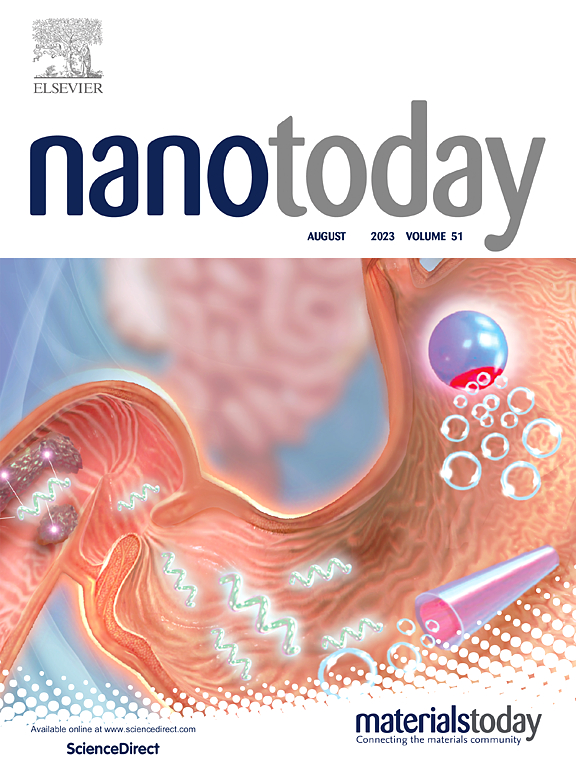Acid-tolerant and hypoxia-responsive drug delivery system based on sulphobetaine-modified azocalix[4]arene for treating ulcerative colitis
IF 10.9
1区 材料科学
Q1 CHEMISTRY, MULTIDISCIPLINARY
引用次数: 0
Abstract
Oral administration has been considered a conventional therapeutic strategy for ulcerative colitis (UC) due to better safety profiles, convenience of administration and high patient compliance. However, the application faces challenges of premature drug release and degradation in the harsh gastrointestinal environment, resulting in a diminished therapeutic efficacy. Herein, we customized an acid-stable and hypoxia-responsive macrocyclic carrier, zwitterionic sulphobetaine modified azocalix[4]arene (SBAC4A). SBAC4A possesses the hypoxia-responsiveness ability due to the azo groups, the acid resistance ability in the acidic environment because of the zwitterionic parts and phenolic-OH groups, and the capacity for effective internalization by colon epithelial cells on account of its zwitterionic nature. By loading sulfasalazine (SF), the resultant supramolecular nanoformulation SF@SBAC4A demonstrates enhanced anti-inflammatory efficacy. When applied in UC in vivo, the therapeutic effect of SF@SBAC4A was significantly enhanced compared to free SF, as it effectively alleviated colon inflammation and promoted mucosal repairment. Importantly, this design principle provides a supramolecular strategy for developing oral delivery systems for anti-inflammatory drugs.
基于亚硫甜菜碱修饰偶氮杂环芳烃治疗溃疡性结肠炎的耐酸低氧给药系统
口服给药被认为是溃疡性结肠炎(UC)的传统治疗策略,因为它具有更好的安全性、给药方便和患者的高依从性。然而,该应用面临着药物在恶劣的胃肠道环境中过早释放和降解的挑战,导致治疗效果下降。在此,我们定制了一种耐酸和低氧响应的大环载体,两性离子硫甜菜碱修饰偶氮杯芳烃(SBAC4A)。由于偶氮基团,SBAC4A具有缺氧反应能力;由于两性离子部分和酚羟基,SBAC4A在酸性环境中具有耐酸能力;由于两性离子性质,SBAC4A具有被结肠上皮细胞有效内化的能力。通过负载磺胺氮磺胺吡啶(SF),所得的超分子纳米配方SF@SBAC4A显示出增强的抗炎功效。在体内应用于UC时,SF@SBAC4A的治疗效果比游离SF明显增强,因为它能有效缓解结肠炎症,促进粘膜修复。重要的是,这一设计原则为开发抗炎药物口服给药系统提供了一种超分子策略。
本文章由计算机程序翻译,如有差异,请以英文原文为准。
求助全文
约1分钟内获得全文
求助全文
来源期刊

Nano Today
工程技术-材料科学:综合
CiteScore
21.50
自引率
3.40%
发文量
305
审稿时长
40 days
期刊介绍:
Nano Today is a journal dedicated to publishing influential and innovative work in the field of nanoscience and technology. It covers a wide range of subject areas including biomaterials, materials chemistry, materials science, chemistry, bioengineering, biochemistry, genetics and molecular biology, engineering, and nanotechnology. The journal considers articles that inform readers about the latest research, breakthroughs, and topical issues in these fields. It provides comprehensive coverage through a mixture of peer-reviewed articles, research news, and information on key developments. Nano Today is abstracted and indexed in Science Citation Index, Ei Compendex, Embase, Scopus, and INSPEC.
 求助内容:
求助内容: 应助结果提醒方式:
应助结果提醒方式:


